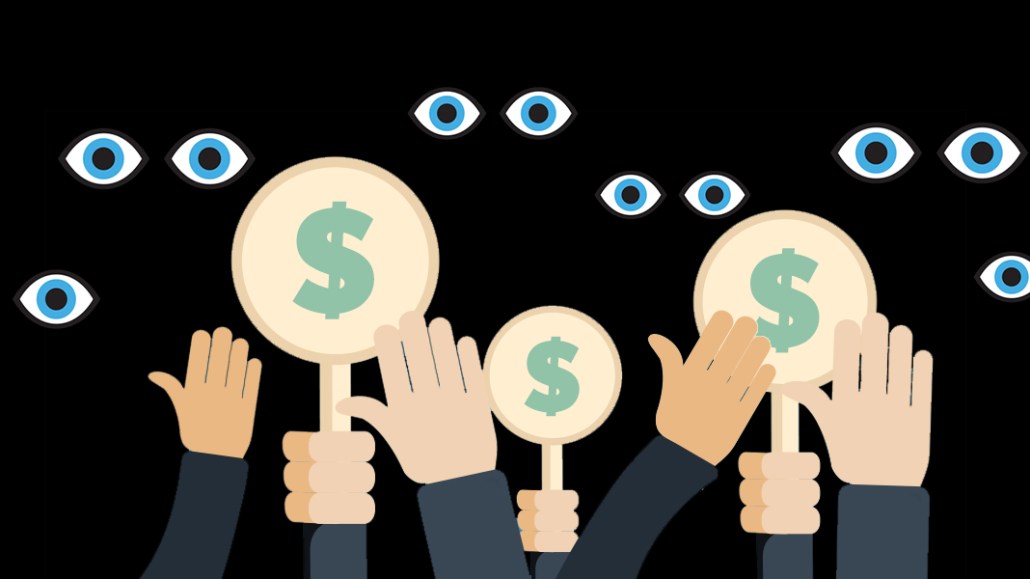‘More into less’: Diageo to consolidate ad tech spending

It used to be publishers spent a lot of time worrying about their ad tech vendors. That’s still mostly true, but there are murmurs of growing concerns among advertisers like Diageo that believe their vendor relationships have unnecessarily multiplied into a sub-optimized snarl.
Let’s face it, with seven in ten (69%) dollars spent online done so programmatically per Zenith, ad tech vendors are intrinsic to how media is traded. The question is whether advertisers should be paying as much attention to how those ads are sold as publishers do.
For Diageo, which hired its first head of programmatic media in 2016, the answer is clearly yes. The CPG advertiser plans to cut out unnecessary ad tech vendors, particularly supply-side platforms that sell impressions on behalf of publishers, according to a source with knowledge of those discussions.
“Diageo is working through a process to optimize how they buy programmatic media, which is going to take months rather than weeks,” said the source. “The plan is to put more [programmatic dollars] into less [SSPs].”
There are three benefits to doing this: First, the advertiser gets to demand greater transparency into how auctions are run from ad tech vendors in exchange for its dollars. Second, an advertiser could ask for more intel on how their bids actually reach the publisher. And finally, the advertiser could negotiate lower service fees charged by the ad tech to ensure more of their money reaches the publisher, making them more competitive in auctions versus other advertisers.
But in order to consolidate its spending through a handful of ad tech vendors, Diageo’s marketers have to know which ones to trust.
Over the summer, marketers from the advertiser started meeting with ad tech vendors to understand how they run programmatic auctions, said the source.
At least 10 SSPs have been approached so far by Diageo’s marketers, who the source said want a breakdown of the inventory each sells. These conversations boil down to the SSP having to justify why it should not be dropped as an ad tech vendor. That usually involves agreeing to a long list of incentives that can range from the SSP outlining its road map to the advertiser to offering them discounts on certain fees.
In other words, Diageo is trying to find the best media sellers, discover the best route to them, and then know what a fair price is to pay for the impressions they’re selling.
Without having the inside track on auctions, the chance of Diageo’s media buyers bidding on the same impression multiple times is high.
Thanks to header bidding, rather than getting one opportunity to buy an ad on a web page, the ad tech an advertiser would use to buy it would normally see around 20 different opportunities from different SSPs and exchanges. Those ad tech vendors are buying and selling impressions from one another, making the whole supply chain messy, confusing, and inefficient. Effectively, there are now a lot of different ad tech vendors selling and reselling the same ad.
Diageo declined to share any specifics on the plan, though did shed light on its broader plans for transparency into media. A spokesperson said “Bringing technology and expert talent together is central to our media strategy, and we are constantly reviewing our global media operations to ensure the highest quality, efficiency, and effectiveness of media investment in service of the growth of our brands.”
Additionally, in a year of frugality, Diageo’s ad tech consolidation might become a key way to help maintain profitability from its media spending given it paves the way for its marketers to remove inflated costs that aren’t providing value.
“Yes, SPO’s primary purpose is to give advertisers more transparency into how the bid landscape is diversifying and outline where unnecessary supply entities are increasing cost with no perceived value to advertisers or agencies,” said Alex Perrin, vp of programmatic strategy at ad tech vendor Adelphic. “But advertisers can also run experiments and tests to identify the ‘pipes’ [that] yield lower cost impressions while still delivering scale and performance outcomes”
This is a long test and learn process, with no one size fits all solution. And it’s why there are so few advertisers playing a part in these negotiations with SSPs. Often, its agencies and demand-side platforms that are consolidating media dollars into fewer SSPs.
Historically, advertisers have not been well equipped (or staffed) to do this. And even when they did it it was through blunt efforts like shutting off or opening up entire exchanges to see the impact they had on campaigns. In recent years, however, the arrival of tools like ads.txt and sellers.jsons has made it easier.
Last November, Nestle kicked off its own attempt trim ad tech middlemen from its supply chain. At the time, it had gone from 65 SSPs to 10 and planned to make further cuts. BT’s media director Graeme Adams has also hinted at making similar moves.
More in Media

Publishers are hunting for AI prompt data — now they’re starting to get it from third-party companies
Publishers are finally gaining some visibility into AI search, as new prompt data tools crack open a black box.

Digiday+ Research: Publishers’ growing focus on video doesn’t translate to social platforms
Major publishers have made recent investments in vertical video, but that shift is not carrying over to social media platforms.

Technology x humanity: A conversation with Dayforce’s Amy Capellanti-Wolf
Capellanti-Wolf shared insight on everything from navigating AI adoption and combating burnout to rethinking talent strategies.







